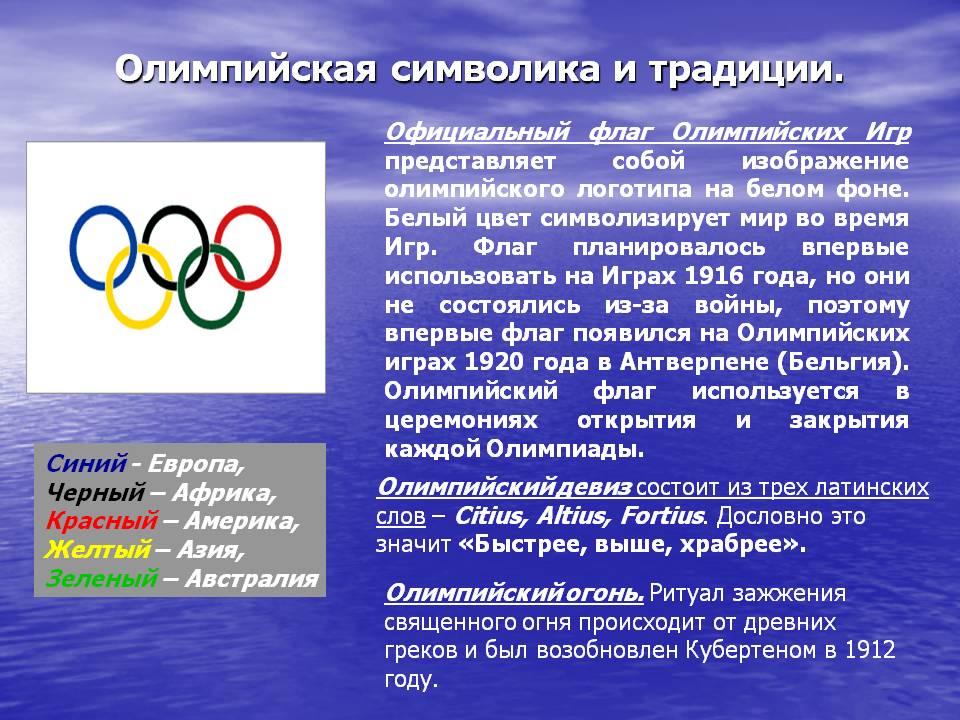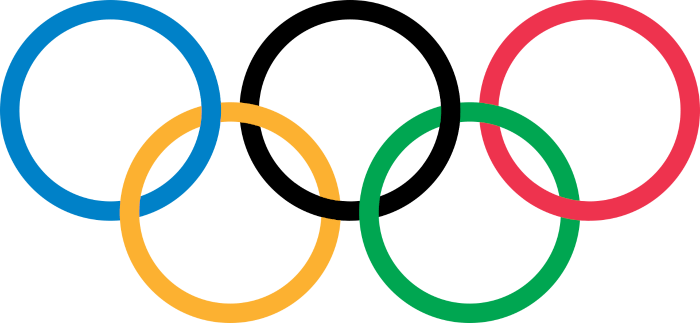
Olympic symbols - where did they come from and what do they mean?
Contents:
The Olympic Games are the oldest and largest sporting event with many traditions. Among them there are many such its roots go back to ancient times... During the Olympic Games, athletes from all over the world can demonstrate their skills in 50 different fields / disciplines. Games take place in spirit of noble competitionespecially emphasizing brotherhood and mutual support of all peoples participating in them. The Olympic Games are divided into Summer and Winter Games, each of which is held. every 4 years, with a difference of two years.
The Olympic Games - how were they created?
To understand the present well Olympic symbols, it is worth familiarizing yourself with the history of the Games themselves. In ancient Greece, the word "Olympic Games" did not mean the games themselves, but the four-year period between them. The first Olympic Games we know today took place in Greece in 776 BC and lasted only five days. During the Games, armed conflicts were suspended for two months. Before the start of the competition, the participants took an oath to Zeus, in which they assured that they trained hard and would not commit any scams. The winner received great fame and was awarded. olympic laure... The first competition was dromos, that is, running at a distance of less than 200 m, in which great attention was paid to the correct running technique. The ancient games were only for men, both among the participants and among the spectators, since the competitions were held in the nude. The last ancient Olympic Games were held in AD 393.
They were returned only in 1896 year the summer competition had strong references to ancient traditions from the start. However, before that happened, the Scandinavian Olympics were held in 1834 and the Greek Gymnastics Games were held three times in 1859. In the second half of the nineteenth century, the fascination with ancient culture grew, and Olympia was subjected to archaeological excavations. For this reason, references to the Olympic Games reappeared rather quickly. In 3 year was founded International Olympic Committee oversaw the holding and organization of the Games, and two years later, the Olympic Games were held in Athens for the first time in the modern era.
Olympic flag - what do the circles on the flag mean?

The wheels on the Olympic flag are some of the most famous symbols of unity... They say that people on Earth are both diverse and united. Each Olympic circle represents a different continent:
- blue - Europe
- black - Africa
- red - America
- yellow - Asia
- green - Australia
All of these colors (see Color Symbols), including the white background, are also the flag colors of the countries taking part in the Games at that time. It is also given as the symbolism of the circles on the Olympic flag. five sports competitions in antiquity. Olympic rings - the most famous and recognizable symbol of the Games.
Olympic anthem
The Olympic anthem was not created until 1896. Lyrics by Kostis Palama, music by Spyros Samaras. Song it's about healthy competitionso it is relevant to every competition. After that, a separate anthem was prepared for each Olympiad. In 1958 alone, one official Olympic anthem was adopted - the anthem of 1896. Although the original play was written in Greek, its words were translated many times depending on the country in which the games were played.
Fire and Olympic torch

Giancarlo Paris with the Olympic flame during the opening ceremony of the Olympic Games in Rome - 1960. (source: wikipedia.org)
The Olympic flame is lit by sunlight on Olympia Hill. From there, the Olympic relay passes the torch to the next runnersand then the fire spreads to the city where the competition is taking place. There, however, they shoot from him. Olympic torch during the opening ceremony. The tradition of the Olympic flame dates back to 1928, and the relay race continued in 1936. Lighting a candle signifies the opening of the Games. I treat myself as a symbol of Olympic ideals. For this reason, it was lit many times by people symbolizing something important in the history of mankind, for example, in 1964 it was lit by Yoshinori Sakai, who was born on the day of the nuclear attack on Hiroshima.
Opening and closing ceremony
At the beginning of the Games, the host country and its culture are presented to all those present, and then parade of countries participating in the Games... Each country designates one athlete to fly its national flag. The stadium is attended by representatives of Greece, followed by representatives of other countries in alphabetical order (according to the official language of the country). The Games Hosts come out last.
It also meets during the opening ceremony. Olympic oaththree selected participants speak: one athlete, one judge and one coach. Then a candle is lit and pigeons are released - a symbol of peace. The words of the vow are focused mainly on fair play, so the entire opening ceremony is simply a celebration of the Olympic ideals, that is, brotherhood and healthy competition.
Closing ceremony art show prepared by the hosts and the city that will host the next Olympic Games. All flags are carried together and participants are no longer split by country. The torch goes out, the flag is removed and transferred to the representative of the next owner.
Mascots of the Games

Wenlock and Mandeville are the official mascots of the London 2012 Summer Games
Olympic mascots were introduced in 1968 when mascots appearing at various sporting events were gaining popularity. However, Olympic mascots have always had a cultural dimension. They resembled characteristic animal of a given country or cultural figure... The first big mascot was Misha, who popularized the Moscow Olympics in 1980, appearing on many commercial products. Years later, the entire Olympic Zoo was created, and then the mascots ceased to be just animals, and began to be demonstrated during the performance of various Olympic sports. Talismans always have a name that refers to a given region.
The talismans were supposed to bring good luck (see: symbols of happiness) and success to the players, as well as relieve the tension of the competition. Nowadays, Olympic mascots are a way of spreading knowledge about the Olympic Games among children and young people.
?????
grace